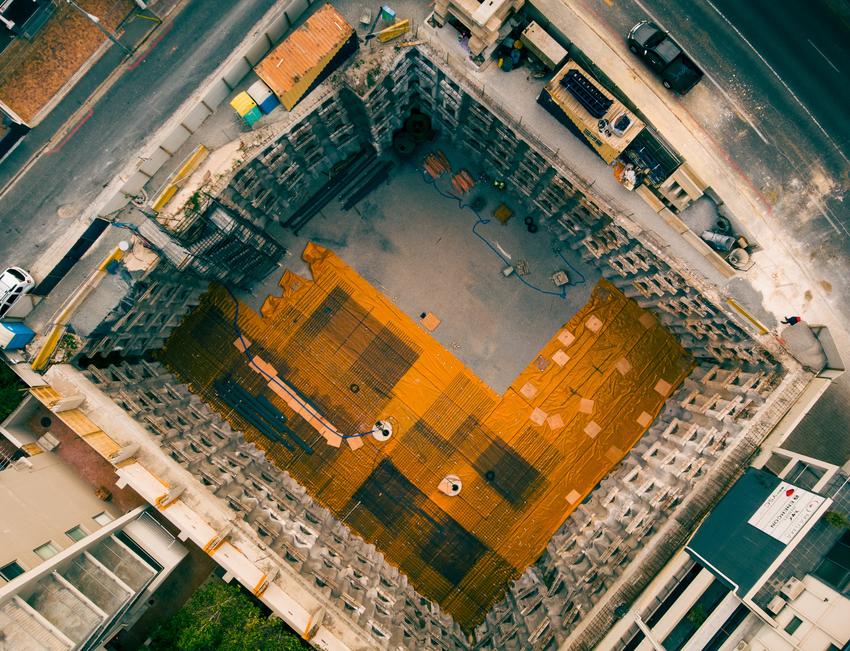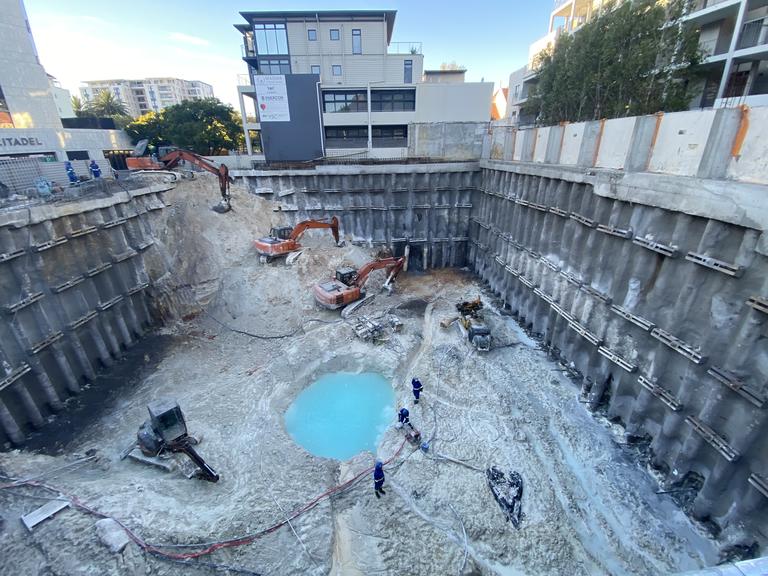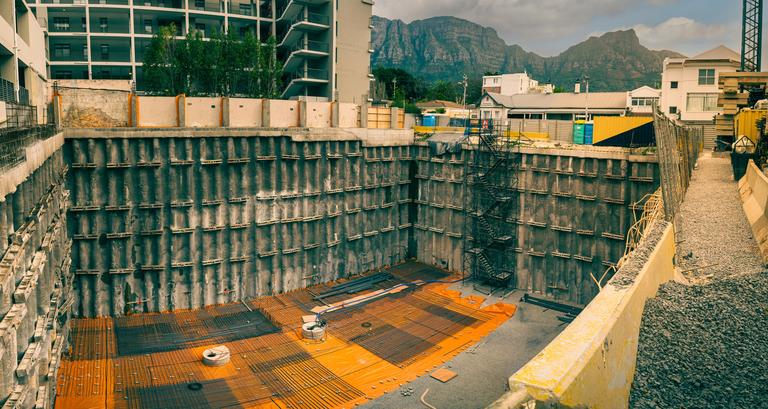Keller Geotechnics SA has been at it again in Claremont, Cape Town. 1 on Osborne is located in Claremont, right opposite Cavendish Square. With the company’s many years of experience, it was selected to provide the solution to deliver a five-level basement with a depth of up to 16,5 m in clay conditions.

Scope of project
The site is located on the corner of Osborne and Cavendish Road in Claremont, directly opposite Cavendish Square mall, yet ideally located just outside of the Claremont hub. The site’s footprint is approximately 1 000 m2 and Keller Geotechnics SA was tasked to deliver a 16,5 m deep basement.
Keller Geotechnics SA’s project scope included CFA soldier piles along the perimeter, capping beam construction, bulk earthworks, lateral support consisting of gunite arches, anchors and waler beams, as well as a civils scope where it had to lay the sub-soil drainage required for the basement.
As deep as it gets
This type of basement construction posed a number of challenges with regard to both the general design and the design of the lateral support requirements,” says Contracts Manager, Daryn Cloete.
“The soils on this site consist of a 3-4 m layer of transported silty sand beneath which is highly decomposing granite consisting of weak clay in the form of kaolin. This extends to a considerable depth of 20 m. A perched water table rests on top of these kaolin clays and is visible within the first 2 m from natural ground level,” he explains.
“One of the major difficulties on this project was the restricted access to the site, with only two access and exit points for materials, both exiting onto the very busy Cavendish and Warwick Roads in the Claremont CBD. This was exacerbated by the small footprint of the site, combined with the depth of the basement. All of these severely limited our ability to provide suitable access ramps for the heavy plant,” Cloete explains.
“From a geotechnical perspective, the central challenge was that the very low shear strength of the kaolin – in which ground anchors had to be installed on this project – has a limiting effect on the maximum possible anchor loads. This, combined with the disintegrating qualities of the kaolin when exposed to ground water, results in maximum anchor capacity of 450 kN."

The basement shows white Kaolin clay to final level, with restricted excavation techniques.

Access staircase for slab steel preparation
Results of the challenging ground conditions
It is well known that lateral support movements can be considerable in these soils. In addition, the perched water table added to the challenges. This had to be constantly managed to ensure that the in situ soils would not become saturated, which would make the work platform inaccessible or unstable.
As the lateral support progressed, the perched water table was caught behind the gunite arches and transported to excavation levels by drains. This required constant dewatering in order to prevent the disintegration of the kaolin clay into a slumping slurry. “Key to the success of the project was the creation of a suitably hard standing area and a dewatering system at the final level to provide a safe work platform for the installation of the civils scope and permanent drainage,” explains Cloete.
“While there have been many challenges on this project, we have been able to move ahead efficiently. The excellent relationships we have with our client, professional team and contractors has been critical to the success of the project,” concludes Cloete.
Keller Geotechnics SA has an experienced design-and-construct team, especially in this geographical area. In the face of severe challenges it has successfully provided a lateral support design-and-construct solution that it has developed over the years.